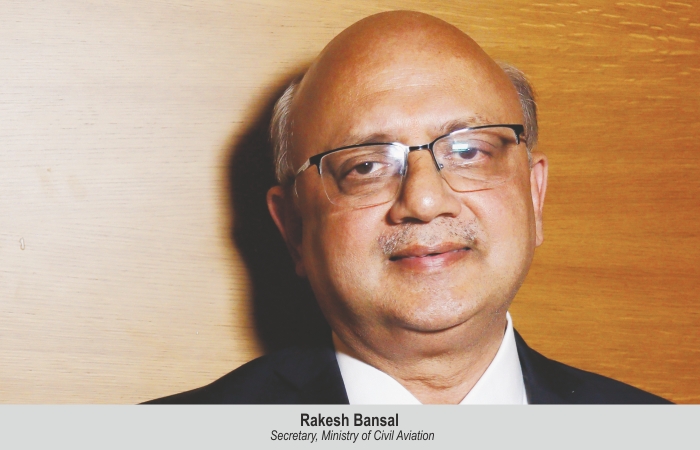Rakesh Bansal, Secretary, Ministry of Civil Aviation, says the government is working towards expanding small and big airports, and once smaller airports are operational, smaller aircraft will lead the next phase of civil aviation growth.
Janice Alyosius
Rakesh Bansal, Secretary, Ministry of Civil Aviation, says the civil aviation industry in India is in one of the best phases in its history. “We are expanding small and big airports. The ministry is working towards expanding the airport network and building capacity of major airports. Airports in Delhi and Hyderabad are being expanded. A second terminal is being built in Delhi and Bengaluru. We have already opened a new airport in Mumbai and smaller airports are being built in Goa. Kushinagar International Airport, Devegowda Airport, and Keshod Airport are all operational. As a result, the range of large, medium, and small airports is being broadened,” he says.
“While there were around 70 airports in the country till 2015, we have added 70 more in the last 7-8 years. And we will add another 70 in the next 2-3 years. So, we will fly up to about 220 airports from around 145, where we are now. So, there is tremendous growth in the airport sector. Many of these additional airports are smaller and connecting to small towns,” he adds.
Uttar Pradesh currently has nine airports, another five airports are set to open in the coming months, bringing the total number of airports in the state to around 18. “So, there are a lot of airports being built in UP,” shares Bansal.
Speaking of Udaan scheme, he says, “There is a three-year lock in period under the Udaan scheme, but there is no lock-in period for normal operations in non-Udaan sectors. Several flights were cancelled during COVID, but this will not happen again because there is so much demand that airlines will not cancel flights. Demand is at an all-time high today, and domestic passenger numbers have surpassed pre- COVID levels, with which we are very pleased.”
He adds, “Most of the airlines in India are operating either A320 or a Boeing 737, these carry about 180 passengers. A number of airlines, including Indigo and Alliance Air, operate the 80R72 aircraft, which carries 72 passengers. Spicejet operates the Q400, which carries approximately 90 passengers. When we operationalize smaller airports in the next phase of growth, it will belong to smaller aircraft in the category of 19 seaters as well as nine seaters. As a result, there has been a lot of interest in operating these aircraft. A number of airlines have leased these aircraft, and this trend is expected to continue, with more of these smaller aircraft flying in Indian skies in the future. The year 2023 will be another extremely bright year for civil aviation, with almost every month, a new airport will be inaugurated and many of the terminals are expanding.”
A recent study indicates Asia will drive the global aviation growth over the next two decades, with India would become Asian aviation’s growth engine. Indian Aviation is expected to grow four times by CY41. Realising this growth potential, it would require industry efforts on multiple fronts such as creation of international hubs in India, implementation of digital solutions in the aviation sector, indigenization of the aviation sector, skilling and safety. India has the dual advantage of a large market and geography. India is the world’s third largest market for civil aviation and moving forward, Indian airports can be a transfer point for over 90 million I to I pax per annum from other regions.
 TravTalk India Online Magazine
TravTalk India Online Magazine





